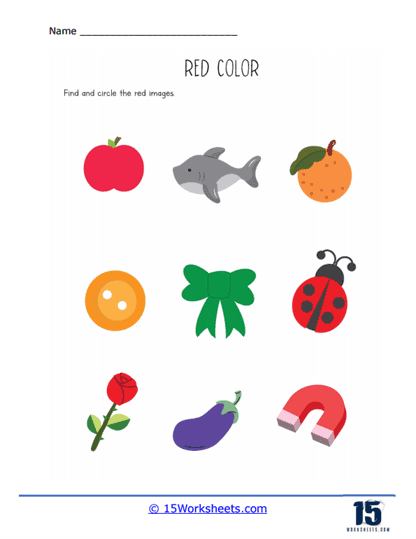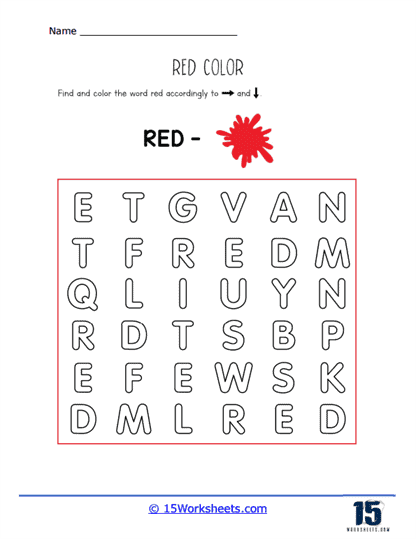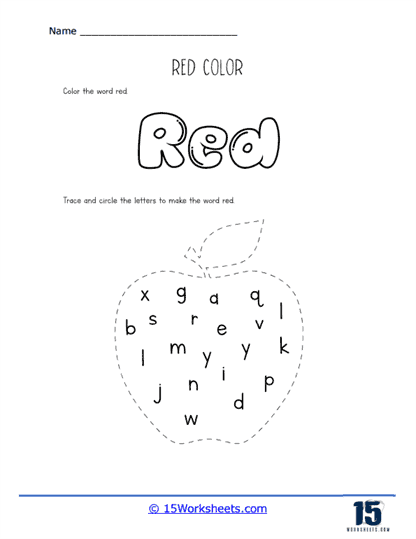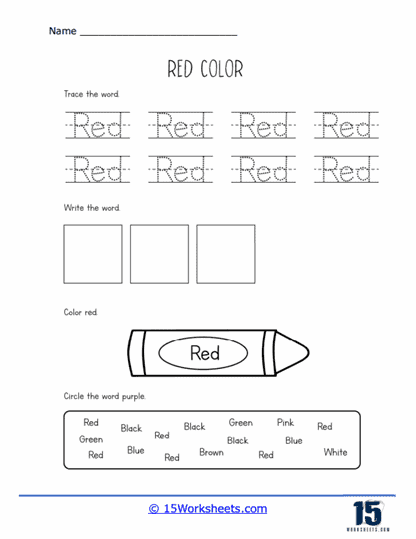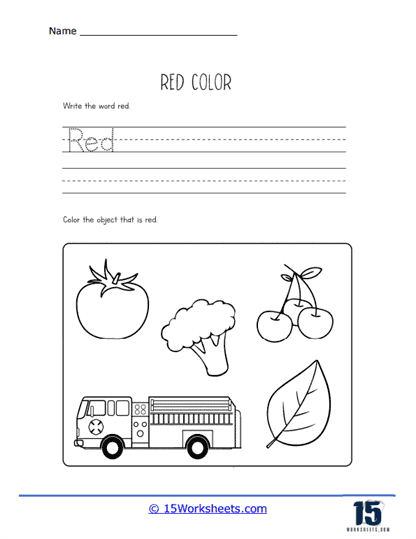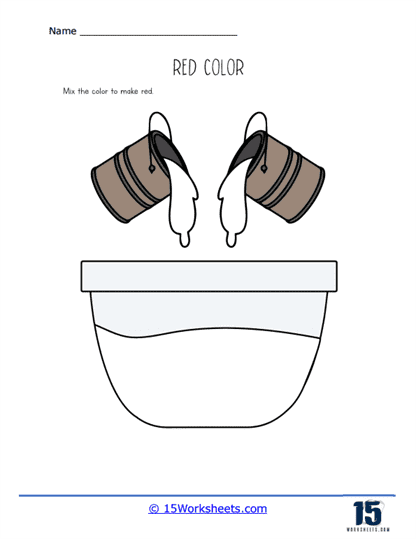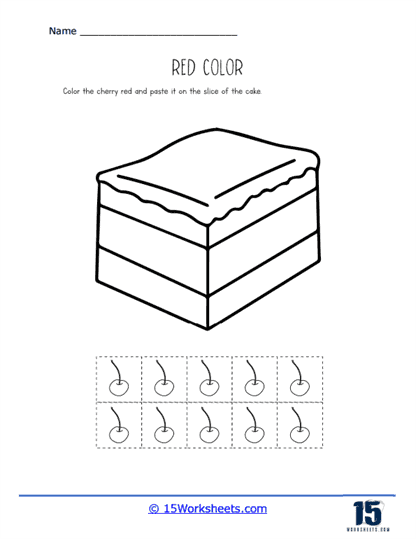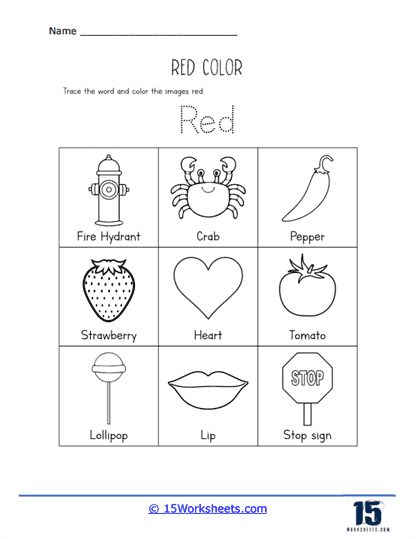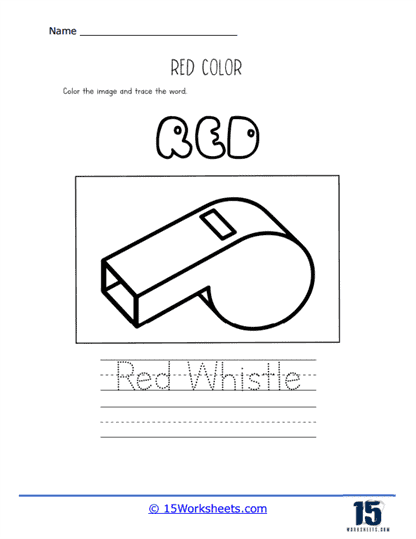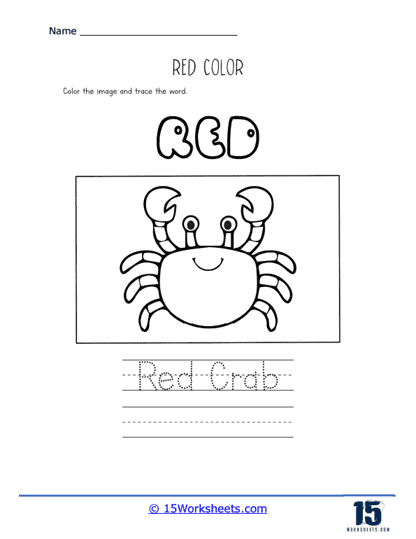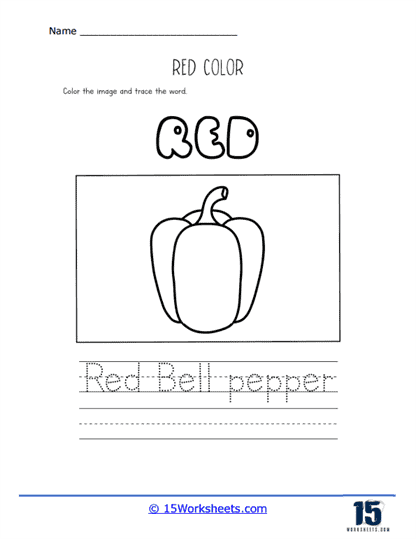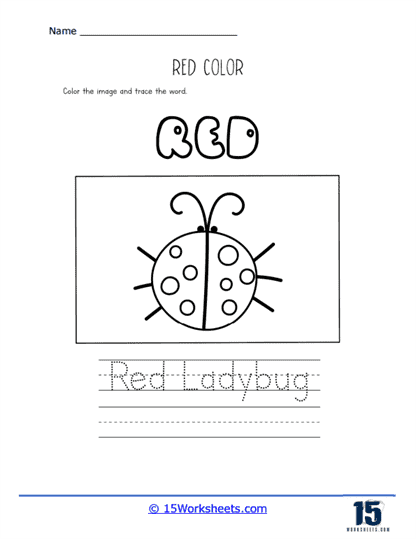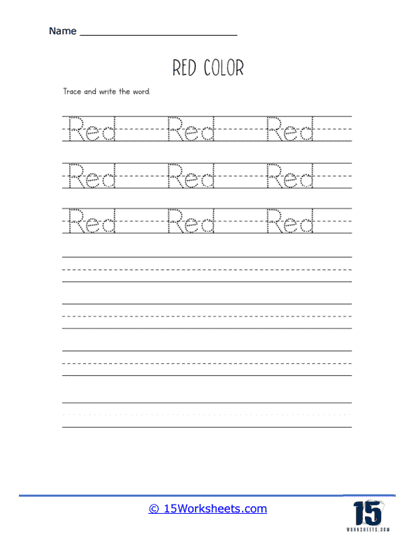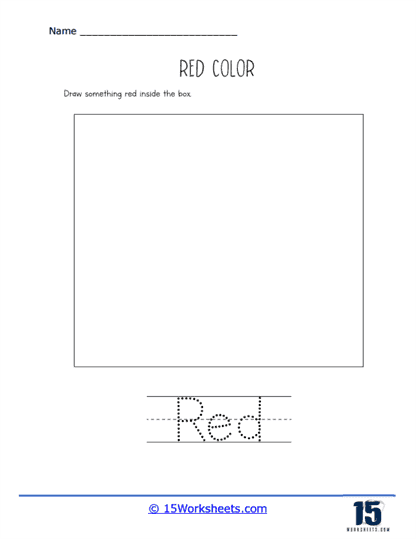Red Worksheets
All About These 15 Worksheets
The collection of worksheets is centered around teaching the color red to young students. Each worksheet approaches the topic from a different angle, focusing on both recognition of the color and the spelling and writing of the word “red.” Here’s a breakdown of the various tasks and learning objectives:
Visual Recognition and Matching
Some worksheets in this collection, like the first one, ask students to visually identify objects that are red from a selection of images featuring different colors. Students are required to find and circle images that display red objects like an apple, a ladybug, and a magnet. This exercise helps young learners differentiate between colors while reinforcing their recognition of the color red in everyday objects.
Word Searches and Spelling Activities
Several worksheets include activities like word searches and tracing letters. For example, one worksheet prompts students to find the word “red” within a grid of letters, while another asks them to trace the word multiple times. This reinforces letter recognition, helps improve fine motor skills, and encourages familiarity with spelling. These types of exercises are important for early literacy as they help students connect the visual representation of the color to the written word.
Writing Practice
Other worksheets focus on writing the word “red.” In these exercises, students are asked to trace and then write the word “red” independently, which encourages both muscle memory in writing and cognitive reinforcement of the spelling. These activities develop fine motor skills and introduce young learners to early writing practices, particularly important for students beginning to form words and sentences.
Color Association
Several worksheets incorporate activities that ask students to color specific images that are typically associated with the color red, such as fire hydrants, tomatoes, and stop signs. This association between objects and their color builds a stronger cognitive link to the word “red,” helping students better understand when and where they might encounter the color in their daily lives. Additionally, the coloring exercises help develop creativity and hand-eye coordination.
Mixing Colors
One of the worksheets features a color mixing activity, inviting students to “mix” colors to make red. Although the illustration likely uses color theory in a simplified way, it introduces the concept of color blending and teaches students that colors are not just standalone entities-they can be combined to create other shades.
Visual Word Recognition and Word Circles
The final set of worksheets has students identify and circle the word “red” among other color words (such as blue, green, and black). This task challenges students to focus on reading and recognition, distinguishing between multiple words, and sharpening their literacy skills.
Why is Red the Uncomfortable Color?
Red, a color that is both vibrant and bold, has long fascinated humans for its intense and multifaceted associations. It is a hue that commands attention, stirring emotions and signaling urgency. But while red can evoke feelings of passion, excitement, and celebration, it also holds the power to make people feel distinctly uncomfortable. Why does this happen? The answer lies in a complex blend of psychological effects, cultural meanings, and physiological responses that make red one of the most provocative colors in the human experience.
The Color of Caution and Danger
One of the most common reasons red causes discomfort is its strong association with warning and danger. Throughout history, red has been employed as a color to alert people to potential hazards. From traffic lights and stop signs to hazard warnings, red is a color that commands us to stop, pay attention, or proceed with caution. This deep-rooted connection to danger is not arbitrary; it taps into our primal instincts. When we see red, our brains may automatically associate it with risk or threat, even if none is present. This automatic reaction can induce feelings of unease, as the color subconsciously signals that something is wrong or requires immediate attention. Imagine walking into a room painted entirely in red-your body might respond with a heightened sense of awareness, making it hard to relax.
This effect is no accident. Red’s visibility and contrast make it the ideal color for alert systems, but its prevalence in these contexts also means we’ve been conditioned to view red as a color of urgency. While this can be a practical tool in life-saving situations, it also means that encountering red in non-threatening environments can still provoke anxiety, making people feel on edge without quite knowing why.
A Physiological Reaction
The discomfort associated with red is not merely psychological; it can also be deeply physical. Research has shown that the color red can cause physiological changes in the human body, including an increase in heart rate and blood pressure. These responses are often linked to the body’s “fight or flight” mechanism, a survival instinct that kicks in when we perceive potential danger. When you’re exposed to the color red, your body might begin to react as if it’s preparing for some sort of action, whether or not that’s actually necessary.
This is why red is often described as an “exciting” color, one that creates a sense of urgency or stimulation. However, for individuals who are already stressed or anxious, the heightened physiological responses triggered by red can become overwhelming. Instead of energizing them, the color might amplify their discomfort, causing them to feel more tense or agitated than before. In environments that require calmness or focus, such as workplaces or study areas, the presence of too much red can be counterproductive, contributing to distraction or even irritability.
A Color of Aggression and Intensity
Red is a color often linked with aggression and strong emotions, and for good reason. Culturally and historically, red has been associated with anger, war, and bloodshed. In fact, we often use phrases like “seeing red” to describe intense feelings of anger or frustration. This connection between red and aggression may stem from its association with blood and violence, two primal forces that evoke strong emotional responses in humans.
In modern contexts, this connection persists. The color red can unconsciously trigger feelings of hostility or confrontation, even in seemingly neutral settings. This is why it’s common to feel uneasy when surrounded by too much red-it taps into deep-seated emotions that we may not even be aware of, intensifying feelings of agitation or unease. For some, red might even evoke memories of conflict or arguments, further solidifying its role as a color that can provoke discomfort.
High Energy, High Stress
Another reason red can be uncomfortable is its high-energy nature. Red is a color that demands attention; it’s impossible to ignore. But this intensity can be overwhelming in certain situations. In a calm, serene environment, the intrusion of red can feel jarring, as if the color is too loud or forceful. It brings with it a sense of urgency, as if something important or time-sensitive is about to happen. This high-energy sensation can create a sense of stress for individuals who prefer more subdued or calming environments.
In some cases, this energy might be exciting-red is often used in marketing and branding to grab attention and elicit action. However, this very excitement can also be off-putting when it feels too strong or out of place. Imagine being in a space designed for relaxation, like a spa or meditation room, but the walls are painted bright red. Instead of feeling calm and at peace, the color might make you feel restless or even anxious. Red’s high-energy presence can easily become overwhelming, making it difficult to unwind.
Cultural Meanings and Interpretations
The psychological and physical effects of red are further complicated by its varied cultural associations. In different parts of the world, red can have vastly different meanings, and these cultural interpretations influence how people react to the color. For example, in many Eastern cultures, red is considered a symbol of luck, prosperity, and joy. It’s a color of celebration, often seen at weddings and festivals. In this context, red carries positive connotations, evoking feelings of happiness and optimism.
In contrast, Western cultures often associate red with danger, anger, and rebellion. It’s the color of protest and defiance, as well as a signal of warning. These contrasting interpretations mean that an individual’s reaction to red may depend heavily on their cultural background and personal experiences. While one person might feel joy or excitement when encountering red, another might feel a sense of discomfort or unease, simply due to the color’s cultural symbolism.
The Subjective Experience of Color
Despite all these associations, it’s important to remember that reactions to color, including red, are highly subjective. Personal experiences, memories, and emotions all play a significant role in shaping how we perceive color. One person might feel empowered and confident wearing a bold red outfit, while another might feel self-conscious or overstimulated by the same shade. The context in which we encounter the color also matters-red in a romantic setting may evoke passion, while red in a high-pressure environment could feel suffocating.
The discomfort some people experience when seeing red is not universal. It’s a complex interplay of psychological, physiological, and cultural factors that shape how we respond to this powerful color. For some, red may be exhilarating and energizing, while for others, it may trigger feelings of tension or unease. Whether it’s a symbol of danger, aggression, or excitement, red remains a color that evokes strong reactions, reminding us of the profound impact that colors can have on our emotional and physical well-being.

